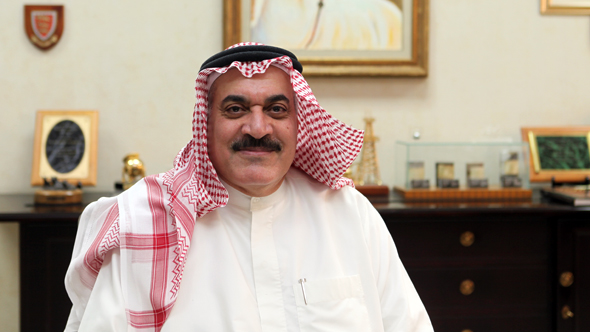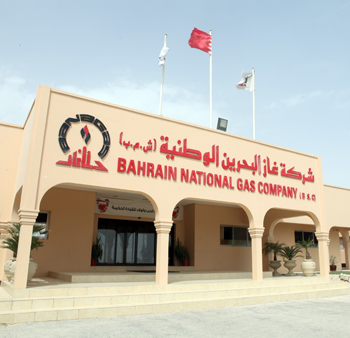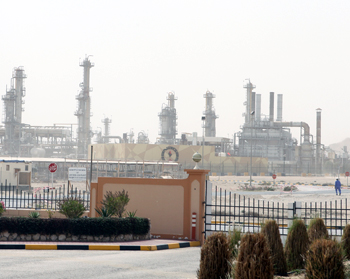Oil & Gas Sector: Bahrain’s Banagas Hopeful of Increased Gas Production
Dr. Mohamed Al Khalifa, Chief Executive of Banagas
We are waiting for a full feasibility study to be completed for what Tatweer’s plans and developments are in future. Then we will hopefully proceed either jointly with Tatweer or one our own if there is more gas available at that time, but the prospect is that there would be extra 150 million standard cubic feet per day.
Interview with Dr. Mohamed Al Khalifa, Chief Executive of Banagas

Regarding the gas production, Tatweer Petroleum is going to drill 15 to 18 new wells in Khuff Formation. Do you see gas production increasing in the Kingdom?
Tatweer started this to boost the oil production in Bahrain and so far they have succeeded, not in reaching the target, but they have ongoing progress to increase the oil production. Meanwhile I think they are also working on gas production and from the announcements, I think there will be a prospect in the gas hopefully by the end of the year. Occidental has been selected to drill for deep gas which is more than 15,000 feet of depth. From what we are seeing now, their programs are working very well and hopefully there will be even better prospects in the future.
Banagas’ mission is to treat assorted gas and create marketable products such as propane, butane and naphtha and export these products.
The country plans to invest more than 20 billion US dollars in the energy sector over the next two decades. What are some of the major projects that are relevant to Banagas and what portion of this investment will you receive?
The major part of that money will go to Bapco masterplan and the rest to Tatweer and the activities in the field and onshore and offshore. I think for Banagas, we will try to get whatever we can relating to associated gas.
Banagas’ mission is to treat assorted gas and create marketable products such as propane, butane and naphtha and export these products. Now hopefully if we get a greater associated gas supply, we are thinking of building another train. We already have two trains and would like to build a third train for utilization of this gas. This would be the largest project for us. The majority of the investment will be for Bapco and GPIC. GPIC and Banagas have similar situations. We need more natural gas, C1 and C2, and we need more assorted gas, C3 and C4. So if there is more gas in the field in Bahrain, these two companies will expand in a good way. 
What are the prospects of finding substantial reserves offshore?
There have been no official announcements but I think they will announce this very soon. If there are prospects then I’m sure there will be programs but if not, I’m sure other companies will be participating in further initiatives.
Banagas has a de-bottling deal. Can you talk more about this and what are the types of improvements?
This is actually two projects and they are small to medium scale. So both of these two projects are worth 60 million US dollars so about 42 to 43 million US dollars will go toward building a new gas compressor station. We have seven stations and now we are building another one. The idea behind this is just to utilize whatever gas is in the field. The other side is to increase the capacity of the plant, modernization of the plant also vie the de-bottling project , and this is a cost of 15.4 million US dollars. So it is just small scale but the bigger scale is what I mentioned earlier.
We are waiting for a full feasibility study to be completed for what Tatweer’s plans and developments are in future. Then we will hopefully proceed either jointly with Tatweer or one our own if there is more gas available at that time, but the prospect is that there would be extra 150 million standard cubic feet per day. So if we have that quantity, we will work on building train three and again that will take a couple of years to accomplish.
The initial study indicated an amount of 200 to 300 million US dollars for train three, of course with other facilities and so on. This could be either a joint venture, operated by Tatweer itself or by Banagas. The greater focus is to have the gas available by that time.
And will this increase the number of people working for Banagas?
Right now there are 500 people.
These things would require more staff and employees although things are much more automated. But still you need someone to work in the field. 
I want to ask you about the LNG terminal. Can you tell us more?
NOGA Holding company is the owner and they have different strategies and initiatives. More of this is just to try to explore to find more hydrocarbon sources. So they started with offshore and now with Tatweer, onshore, and the deep gas is another one. The last is if there are no more prospects at all, the LNG terminal is a key factor for importing gas.
To be honest, I don’t know how this project is progressing but I think the idea is there. I don’t know if they are going ahead with it. We believe that it is a good solution for the future, especially for those companies which need more gas for development and so on. There are many small-scale companies but two or three big companies which need a huge quantity of gas of course in addition to the power utilization. This is the number one challenge in Bahrain and the rest I think we need for petrochemical, iron and steel plants, and other industries which will need large quantities of gas in the future. It’s not that big but we are talking about 500 million standard cubic feet per day which converted is not that much, but there’s nevertheless a need for it.
As you mentioned, that is probably the number one challenge for industry development and industry competitiveness in Bahrain.
The initial study indicated an amount of 200 to 300 million US dollars for train three, of course with other facilities and so on. This could be either a joint venture, operated by Tatweer itself or by Banagas. The greater focus is to have the gas available by that time.
Yes, Alba uses it mainly for fuel although these days we supply Alba with, we are producing 300 million standard cubic feet, 220 million of which mostly goes to Alba, and then Bapco and Riffa power station. It goes to these three but the majority goes to Alba.
The residual gas which would normally be out from Banagas represents almost 25% of Bahrain production. Bahrain produces natural gas in the amount of 1.2 to 1.5 billion standard cubic feet per day. We produce almost 25% of that. What we utilize is a very small quantity of the liquids. This is how Banagas was built – just to treat the associated gas and nothing to do with residual gas. The latter is counted for Bapco. The main aim is just to produce these three products and export.
How much of your production is consumed in Bahrain and how much is exported?
We don’t have any production consumed in Bahrain. Our product is only exported. The bottled gas is produced from the local refinery. Sometimes if there is a shortage at Bapco we supply a small quantity because we have a contract with our buyer. In addition, Banagas also treats some rich associated gas which comes to us from Bapco in the range of 12 to 15 million standard cubic feet per day.
The United States has undergone a huge transformation and now they are almost the largest producer of oil and gas, mainly natural gas, in the world. Many other countries are contemplating developing their own gas reserves. How does this impact your operation?
We are a producer and we are also a consumer. So at Banagas, it’s true that we buy gas from the government although we are also a government entity so we are a joint venture with
Holding, Chevron and Boubyan Petrochemicals. So the issue of gas price has an impact on our productions.
We see that if gas price is on average or table prices, I think it will serve the industry maybe with huge oil shale or gas shale, it will keep the gas prices at a stable position as opposed to having a high price. I believe that in Bahrain and in the region, that we should look at a much more reasonable price of gas rather than emphasizing a high price of gas. That would really develop a lot of industry and employment of nationals and get us on the map for exporting products such as petrochemicals or LPG.
The United States hasn’t yet built their export infrastructure but once this is done they can supply markets in Japan and elsewhere. Will that be a competition to you?
I don’t think so. The market is very big and can consume a lot, although now sometimes they will project their figures for growth and GDP. This year they are saying that oil production will plateau but it seems now that we are almost through the first quarter, it is more than what was expected.
So of course again, there is a forecast and projections for prices, but what we see is there is a different view of that because consumption is very huge, especially with China, India and Japan after closing all the nuclear plants. Of course we are trading our product and the majority of our propane, butane and naphtha goes to Japan now. So there is a need for it.
You have an excellent track record for maintaining safety and not having accidents and helping the community around you.
Banagas is a very socially responsible company and a caring company. This corporate responsibility has been one of our aims and objectives. Five years ago we decided that Banagas should allocate a fund for social responsibility and the board agreed.
In the last five years we allocated almost 3 million US dollars for these types of activities, focusing on the environment, education, and of course some sport and cultural activities. We first find out what type of activities people would like us to contribute to and we do that accordingly. Banagas has already won two awards in this respect and we are very pleased for this recognition for our social responsibility.
What are the major challenges you will be facing over the next years?
Gas supply is the main challenge. Banagas has been in business almost 33 years so we have the right expertise, and facilities and what is really needed is a larger gas supply, either locally or internationally. So we are working very closely with NOGA Holding too. It’s a matter of business continuity and surviving. We can stay like this as an operator and producer but we are very ambitious and we would like to get more and also work toward increased prosperity for the Kingdom.